The greatest UX breakthroughs of the 21st Century (so far)
Here are ten of the biggest UX breakthroughs that have helped to shape this century of tech (so far).
The 21st century has certainly made its mark on the world in just a short amount of time. Technological advances in the last 15 years have grown our capabilities at light speed. However, it’s the adoption of these breakthrough technologies that have made them so impactful on society as a whole.
This is why user experience is one of the driving forces behind enduring technology, leading us to some of the most profound achievements and advancements in modern times. Here are ten of the biggest UX breakthroughs that have helped to shape this century of tech (so far).
And the world would never be the same
These breakthroughs have made a profound impact that has changed the way we approach user experience today. Here are some of the most significant UX design epiphanies in this century that have reformed technology and user experience protocols:
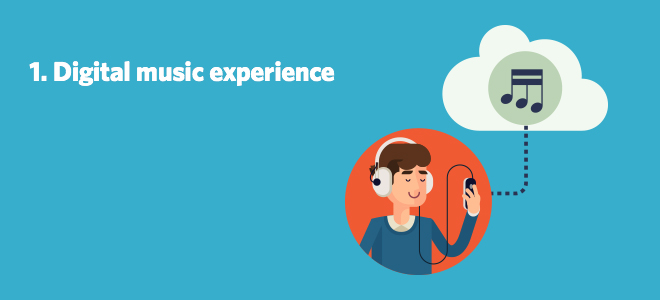
1. The Digital Music Ecosystem
iPod, October 2001 – The dual creation of the iPod and iTunes transformed how people listened to music. The original iPod was built to be small enough to fit in a person’s pocket and only had one scrolling button, as opposed to Sony’s Walkman and Discman having several buttons, moving parts and a clunky size that made them difficult to carry. Though the iPod was not the very first on the digital music scene it did have 5GB of storage, a huge difference when most MP3 players on the market could only hold a couple songs. Apple also enhanced the download experience by making it 30 times faster to download a CD into the iPod than USB-based players.
The UX impact: In a press release announcing the iPod’s launch, Steve Jobs said, “With iPod, Apple has invented a whole new category of digital music player that lets you put your entire music collection in your pocket and listen to it wherever you go. With iPod, listening to music will never be the same again.” Boy, was he right. The impact of the iPod isn’t limited to its technological advances, but rather the entire ecosystem that accompanied it. The introduction of the iPod launched an entirely new digital economy with iTunes, where users have the ability to purchase and download music — a completely new buying experience that has driven the traditional record store to near extinction.

2. Swiping
Swype, 2002 – The Tinder dating app may receive some mainstream recognition of swiping, but this unique functionality was used in other mobile technologies many years before Tinder was developed. The man who started text messaging in the ‘90s, Cliff Kushler, launched the Swype keyboard in the 2000s. Swype improved the efficiency of touch-screen smartphone keyboards by allowing the user to type a word by sliding a finger from letter to letter. This alleviated the frustration of small keyboards on small screens by vastly increasing the ease of use.
The UX impact: Swype improved the user experience by altering navigation and other movement throughout software to make it easier, more accurate and more fluid. Swiping, as a general functionality, was later implemented on iPhones and Google’s Gmail app and has become an extremely common part of a smartphone user’s experience.
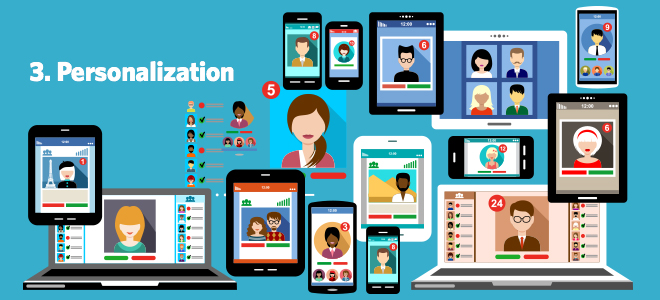
3. Personalization
MySpace, August 2003 – Social media sites, such as Friendster, were already around when MySpace was launched, however, MySpace’s fully customizable site was truly unique and helped jumpstart young people’s love for social media. MySpace users were able to fully control their own profile and thus, their own experience with the website. This developed a push for the personalization of online and, later, mobile experiences.
The UX impact: Providing customizable options in technology is imperative, because people (especially Millennials) have a profound desire to personalize their experience and express their individuality through your product. The ability to customize increases user satisfaction, value and the likelihood that people will continue to use the software.
4. Interactive Feeds
Facebook, February 2004 – When Facebook was developed, it did not have the customization ability of MySpace, but it introduced interactive feeds. Users could scan a lot of information quickly, easily find information on both profile feeds and home feeds (news feeds were introduced in 2006 and propelled Facebook to become the leading news destination for social media), while also engage with (aka Like) their friend’s content.
The UX impact: Though MySpace may not have endured the times, the personalization of its user’s profiles has leaked into the newest generation of social media. Facebook picked up the torch and ran with it when they began personalizing user feeds, determining what content (including ads) they’d most likely want to see based on their past behavior. This idea of personalized content is revolutionizing how we consume news and entertainment across the web and mobile.
Also, let’s not overlook the bold UI changes Facebook makes every couple years, despite user outrage. Facebook has taught us that implementing cutting-edge features with long-term impact is worth the short-term unrest.
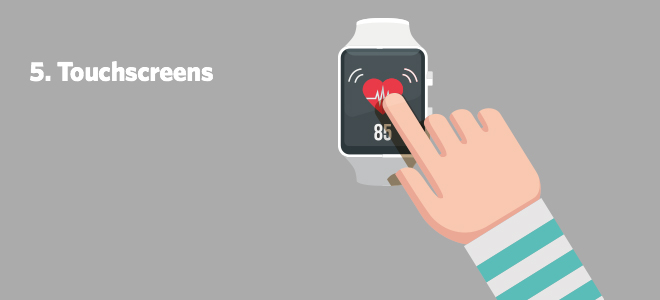
5. Touchscreens
Apple, January 2007 – Contrary to common belief, the iPhone was not the first touchscreen phone (gasp!). However, the iPhone was the first touchscreen phone that had a mobile operating system, allowing it to run applications and programs. Steve Jobs and his brilliant team designed the most innovative, multi-use mobile phone/mini-computer that had ever been built and we have never looked back. It revolutionized mobile computing, making phones easier to use and more powerful. Its simplistic interface includes one button and a touch screen, an extremely organized layout for programs, advanced security features and its own App Store, with more than a million apps, making downloading programs to the phone as easy as online shopping.
The UX impact: By making the screen the actual source of user input, touchscreens gave freed designers from having to build their interfaces around inflexible hardware buttons. Instead, designers can now be more contextual with their interfaces. The popularity of the touchscreen encouraged similar user interfaces in all types of technologies, such as Tesla’s touchscreen control panel and the Nintendo DS, to name a few. And, of course, the touchscreen gave rise to a new standard for mobile usability, changing the way we effectively design mobile experiences from apps to websites.
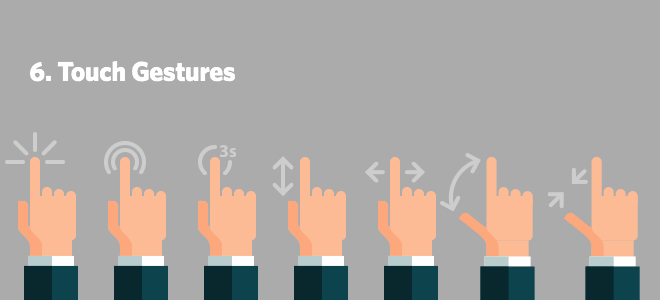
6. Touch Gestures
FingerWorks, 1998 – FingerWorks developed the technology that converts finger movements of different finger combinations into mouse and macro events (such as pinch-to-zoom). Founded in 1998, the company produced a line of multi-touch products, including the iGesture Pad and TouchStream keyboard. I know what you’re thinking: 1998 is not part of this century. I hear you, but this innovation didn’t really go mainstream until the company was acquired by Apple in 2005, hence why you can use gestures to navigate the mobile interface of your iPhone.
The UX impact: This technology enabled the experience we have today on touchscreen devices, the ability to control your mobile experience through touch rather than with buttons or a mouse. Touch gestures have completely changed the way we interact with mobile devices and how we design mobile experiences. Without touch gestures, we literally would not have functional touchscreens today.
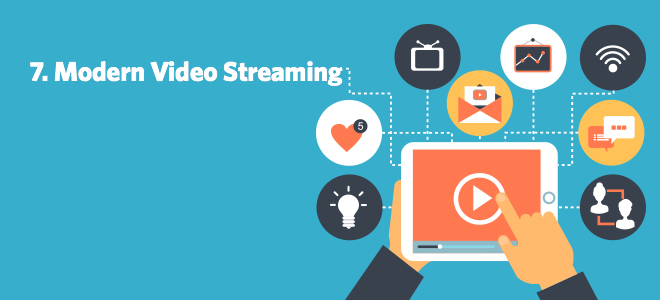
7. Modern Video Streaming
YouTube, 2005 & Move Works, 2007 – YouTube launched its website in 2005, giving rise to video uploading on the web. By July 2006, YouTube users were adding more than 65,000 new videos a day bringing in 100 million video views daily. But the breakthrough that really launched modern day streaming came in 2007. HTTP-based adaptive streaming changed slow buffering videos into the instantaneous media downloads that we use and love today. Move Works introduced this revolutionary service that delivered media in smaller pieces, preventing connectivity issues for customers and slow download speeds. This innovative technology improved the user experience by eliminating the vast majority of the waiting associated with online video and was soon adopted by Adobe, Apple and also allowed Netflix to become a movie streaming powerhouse.
The UX impact: By innovating to eliminate common user frustrations and preventing impatience and inconvenience, HTTP-based adaptive streaming allows people to view media right when they want to view it. This innovation literally powers much of the way we consume modern video content today and has dramatically accelerated the adoption of video streaming.
8. Hashtags and @-Mentions
Twitter, August 2007 – While Twitter launched with the concept of targeting specific users via the @-mention mechnic, the idea of the hashtag was first suggested by Chris Messina (a previous UX designer for Google) on Twitter in 2007. The strategy caught on later that year and Twitter implemented the hyperlinked hashtags in July 2009.
The UX impact: Utilizing hashtags has vastly altered the tag and search functionality by clustering similar information and making it easier than ever to find particular social media posts in real time – which has led in turn to Twitter’s role as the communication platform of choice in multiple major political movements by enabling the instant formation of ad hoc communities. When dealing with a lot of information, it is important to incorporate an easy-to-use tagging and search functionality to better categorize and store information. This enhances usability and provides familiarity with your software that users crave.
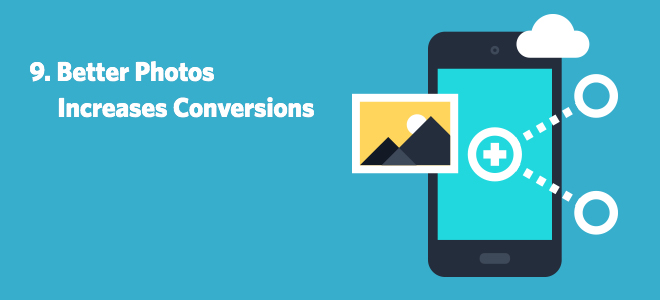
9. Better Photos Increase Conversions
Airbnb, 2012 – The popular vacation rental website found that travelers are 2.5 times more likely to book a room that has professional pictures in its listing, and with that simple change in emphasis, Airbnb prompting shoppers to change their behavior from simple shopping, to browsing and engaging. Utilizing visually strong designs encouraged exploration and discovery, and brought more content to the surface than with search. Airbnb offered its hosts free photography services to exponentially improve the quality of pictures on its website. This strategy doubled the website’s bookings.
The UX impact: Though this may not seem significant on its own, Airbnb’s photo-heavy strategy signals a strong shift from search to user-curated content — as FastCo put it, search isn’t as important as what your friends have already found. It’s completely possible that the browse-based web is the future of all e-commerce.
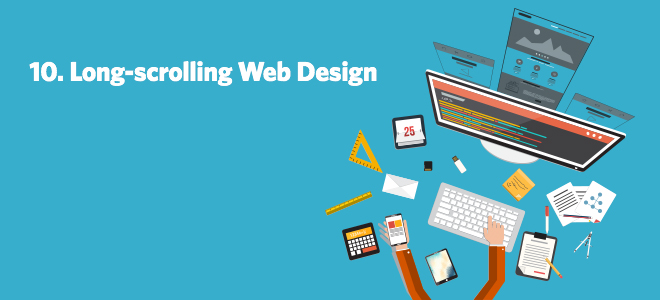
10. Single Page Website Design
Steve Yen, 2005 – Long scrolling, one-page designs seem to be a relatively new trend. However, single page design has been around for more than a decade. No one really knows who was responsible for this phenomenon. Some credit Steve Yen for first using the term “single page application” (SPA) in 2005 to describe a single web page that provides a more fluid user experience where all content is retrieved with a single page load. Others say that the first instance of an SPA was created by Stuart Morris in 2002 with a self-contained website slashdotslash.com (which only works on IE6 now). Adding even more to the story, four other men, Lucas Birdeau, Kevin Hakman, Michael Peachey and Evan Yeh, hold a US patent for a single page application implementation. Regardless of who is responsible for the birth of this trend, designers today have readily accepted the advantages of this simple website layout: easy navigation, natural storytelling, persuasion of a longer stay for visitors and enabling people to scan the site.
The UX impact: Long-scrolling designs display information in a visually creative, yet simple way, enabling users to get the message quicker than clicking from page to page and making them more likely to act. These types of web pages were found to be the easiest to utilize on mobile devices, paving the way for responsive web design.
Never Stop Innovating
These UX breakthroughs have spawned entirely new technologies, industries and even commercial platforms. By rethinking how people use communication and entertainment devices, this century’s greatest innovators developed advanced technologies that have made the 2000s the most user-friendly period in the history of mankind.
Never stop innovating experiences, friends. You never know where it could lead.
Thanks to DIGITAL TELEPATHY